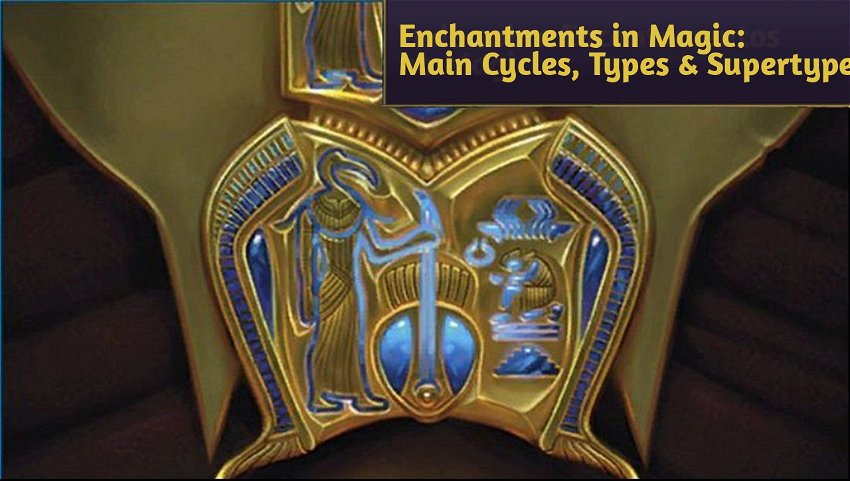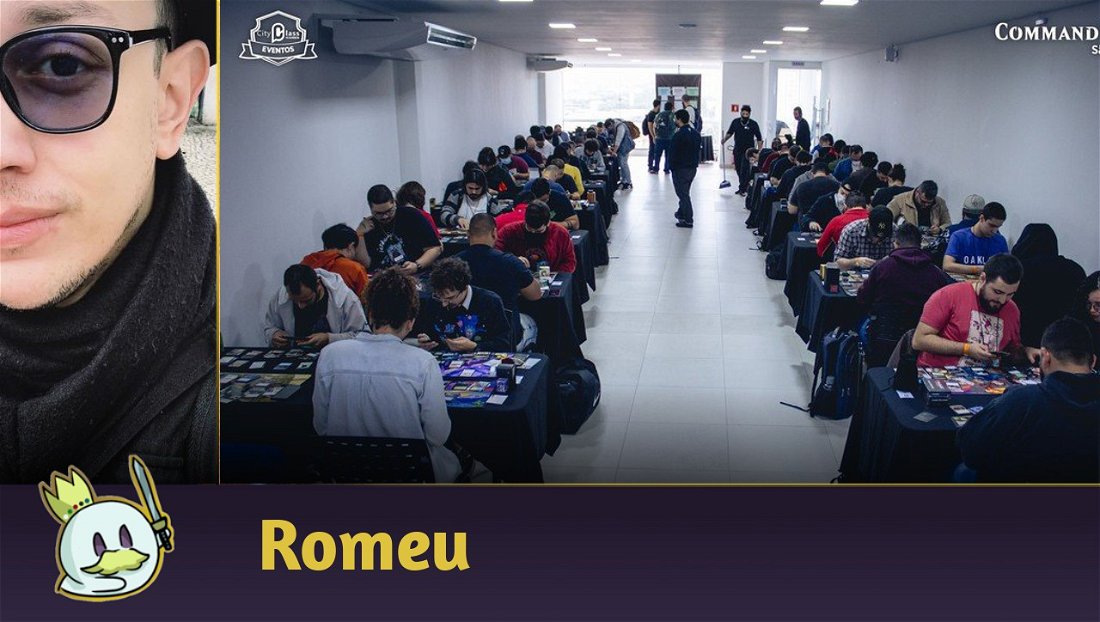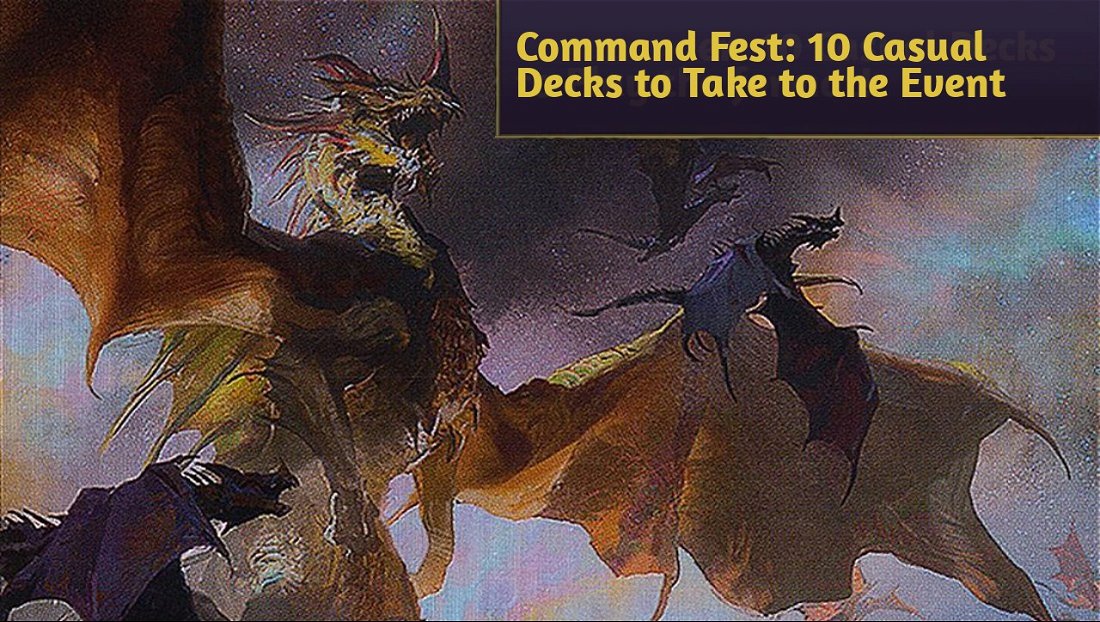What are enchantments in Magic?
Enchantment is a card type that represents magical effects that persist, usually remaining in play indefinitely.
Most enchantments have ongoing effects or triggered abilities, but some also have abilities that can be activated by their controllers.
Cards that just say "enchantment" are global, while those that say "enchant..." are auras (and currently have that written in the card's subtype), which usually need a legal target to cast.
World Enchantments
World, like Legendary, changes the permanent rules in the game: it cannot have more than one type of World Enchantment in the game - and if another is put on the battlefield (regardless of who is putting it), all of them are sacrificed and go to the graveyard.
While it makes sense, it's a problematic type when it comes to deckbuilding, so, in the early years, discontinued this card idea. But it's cool to know the ones that were created:

In total, 26 World-type enchantments were released. Some have had reprints in Commander sets, but most aren't as good. 22 of them are part of the reserved list.
Enchantment Types
Enchantment Subtypes are called "Enchantment Types" and are unique to enchantments.
Until today, we have as type: Aura, Shire, Saga, Class, Cartouche, Shard and Background, according to rule 205.3h. We won't comment on the Shard, as it currently only exists in one token.
Aura

Aura is the oldest of all, present since the first set, with other subtypes linked to it, such as Curse, Cartouche and Rune.
Auras are a type of enchantment that needs a legal target to enchant. If there isn't, it won't even be able to cast. And if, on casting, the target ceases to be legal for some reason, the enchantment goes straight to the graveyard.
It is one of the main friends of creatures with hexproof, some kind of protection or Light-Paws, Emperor's Voice.
One of the big risks of strategies with auras is that it lays all their plans in a single line, because if the enchanted permanent is removed, all the auras go to the graveyard with it. It is usually a more aggressive game, which seeks to finish the game before the opponent finds an answer.
Curse

Curses have been released on Innistrad, bringing a new gameplay strategy. All are auras that enchant a player, bringing negative effects to them, and this even became a powerful strategy in Legacy, the Mono Black Curses
It is worth mentioning that Wizards created Lynde, Cheerful Tormentor to support the strategy in Commander, allowing recursion.
Shrines

With different effects that are boosted by the number of shrines under your control, these enchantments are quite versatile and useful, especially in 5-color decks that can gather all available shrines.
Magic has three cycles of shrines so far, the most recent being Kamigawa: Neon Disnaty which brought the famous Go-Shintai, the first shrine enchantments that are creatures throughout the game - including the Go-Shintai of Life's Origin , who can be your commander, who produces shrine tokens.


You can check out more information about Shrines in this article.
Saga

Dominaria, released in 2018, would change the game forever, with the newest type of enchantment: the sagas. Many players are passionate about the game's lore, and what better than playing with a card that is a whole tale in itself?
According to WOTC, Sagas are enchantments that enter the battlefield with a lore counter, causing a chapter one ability to trigger. At the beginning of your precombat main phase, you put a lore counter on the Saga. With two lore counters, the second chapter's ability triggers. This continues until the final chapter is completed. After that, the story ends and you sacrifice the Saga.
Some recent Sagas have improved their existence by transforming into enchantment creatures; but, for most of them, the story begins at the first chapter and advances one chapter per turn, until the Saga is sacrificed.

Class

Classes are enchantments that may take a while to see in new releases. They are part of the expanded universe of MTG, having mechanics based on the RPG Dungeons & Dragons.
Each Class has three abilities in sections of its text box. We call them class abilities. The Class also has two activated abilities that allow it to level up. The first class ability is active while you control the Class. To access the two other class abilities, you need to pay mana - at sorcery speed, i.e. during your main phase if the stack is empty.
The idea is powerful and refers to a similar mechanic aimed at creatures from the original Zendikar set, Level Up, where it was possible to spend mana to grant it extra properties. The problem is the same: the possibility of investing a lot of time and mana in a single piece to be removed for just a 1 or 2 mana instant.
Cartouche

So far, we only have 5 Cartouches, from Amonketh, and they are all auras that enchant creatures. Its main goal was to make a flavor with the trials.

Hopefully, one day we'll return to Amonketh and see new Cartouches and new interactions with them. The only one that sees any play today is Cartouche of Solidarity, as it creates a new body to protect Voltron decks from sacrifice effects.
Background

This enchantment type was released in Commander Legends: Battle for Baldur's Gate, and is aimed exclusively at the format. Its use is to give your Commander new ability texts - and if the Commander allows it, place a Background in the Command zone.
Example of commanders with Choose a Background include:

Classic Enchantment Cycles
Like all permanents, enchantments have their memorable cycles, which are well worth a visit.
Seals

Wards and Circle of Protection
I decided to put them together because of a unique trait they both share:


Normally, the cycles are cards of different colors, but here we have a cycle of white cards that interacts with other colors, which has always been a strong point of this color - protecting you and protecting what you control, except if you have it on the stack.
Leylines

Ascendancy

In Tarkir, we got this 3-color cycle of enchantments, the most played being Jeskai Ascendancy because it's great for combos.

Ikoria's Cycle

Rare cycle of enchantments from Ikoria, with Song of Creation being the most played, due to its combo potential.
Theros
In this plan inspired by Greek mythology, where enchantments are so important, I separated a part of the article just for the Theros cycles.
Gods Cycle

The first cycle of Enchantment Creatures, and with others to come later, such as multicolored gods.

And then the last gods were printed:

And finally, I couldn't fail to mention the other permanent enchantments from Theros:



Staple Enchantments through Formats
Standard

Note: Fable of the Mirror-Breaker // Reflection of Kiki-Jiki is not at the top because it was banned in the format, and here we see the predominance of white and red.
Pioneer

Being legal on the Pioneer, Fable of the Mirror-Breaker sits at the top, followed by the Shark Typhoon and Temporary Lockdown, played in Control decks. Also, we see the Mono Green Ramp cards here.
Modern

Fable of the Mirror-Breaker at the top of basically 3 formats shows its power - but the cool thing about Modern is seeing that multiple strategies share the podium.
Pauper

Makeshift Munitions has its throne here because of the power of artifacts in Pauper, creating a new offensive line in decks for this strategy.
Commander

I admit I was surprised to see Phyrexian Arena and Garruk's Uprising on this podium, as they seem to be "outdated" these days, but the rest are pretty clear why they're there.
The Grand Champion in the formats is, undoubtedly, Fable of the Mirror-Breaker, being a saga with a very high-power level.
Conclusion
So far, we've discussed lands, creatures, sorceries and instants, in addition to having seen everything about enchantments in today's article.
See you in the next one, where we'll talk about Planeswalkers! Until next time!














— Comments 0
, Reactions 1
Be the first to comment